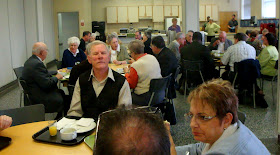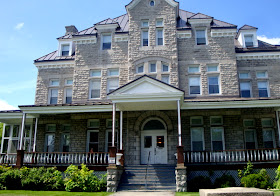Tuesday, 24 May, is dedicated to the liturgical memorial of Our Lady, Help of Christians, who is venerated with great devotion at the Shrine of Sheshan in Shanghai: the whole Church joins in prayer with the Church in China. There, as elsewhere, Christ is living out his passion. While the number of those who accept him as their Lord is increasing, there are others who reject Christ, who ignore him or persecute him: “Saul, Saul, why do you persecute me?” (Acts 9:4). The Church in China, especially at this time, needs the prayers of the universal Church. In the first place, therefore, I invite all Chinese Catholics to continue and to deepen their own prayers, especially to Mary, the powerful Virgin. At the same time all Catholics throughout the world have a duty to pray for the Church in China: those members of the faithful have a right to our prayers, they need our prayers.
We know from the Acts of the Apostles that when Peter was in prison, everyone prayed fervently, and as a result, an angel came to free him. Let us do likewise: let us all pray together intensely for this Church, trusting that by our prayers we can do something very real for her.
Chinese Catholics, as they have said many times, want unity with the universal Church, with the Supreme Pastor, with the Successor of Peter. By our prayers we can obtain for the Church in China that it remain one, holy and Catholic, faithful and steadfast in doctrine and in ecclesial discipline. She deserves all our affection.
We know that among our brother Bishops there are some who suffer and find themselves under pressure in the exercise of their episcopal ministry. To them, to the priests and to all the Catholics who encounter difficulties in the free profession of faith, we express our closeness. By our prayers we can help them to find the path to keep their faith alive, to keep their hope strong, to keep their love for all people ardent, and to maintain in its integrity the ecclesiology that we have received from the Lord and the Apostles, which has been faithfully transmitted to us right down to the present day. By our prayers we can obtain that their wish to remain in the one universal Church will prove stronger than the temptation to follow a path independent of Peter. Prayer can obtain, for them and for us, the joy and the strength to proclaim and to bear witness, with complete candour and without impediment, Jesus Christ crucified and risen, the New Man, the conqueror of sin and death.
With all of you I ask Mary to intercede that all of them may be ever more closely conformed to Christ and may give themselves ever more generously to their brethren. I ask Mary to enlighten those who are in doubt, to call back the straying, to console the afflicted, to strengthen those who are ensnared by the allure of opportunism. Virgin Mary, Help of Christians, Our Lady of Sheshan, pray for us!
PRAYER OF HIS HOLINESS BENEDICT XVI
TO OUR LADY OF SHESHAN
ON THE OCCASION OF THE WORLD DAY OF PRAYER FOR THE CHURCH IN CHINA (24 MAY 2008)
Virgin Most Holy, Mother of the Incarnate Word and our Mother,
venerated in the Shrine of Sheshan under the title "Help of Christians",
the entire Church in China looks to you with devout affection.
We come before you today to implore your protection.
Look upon the People of God and, with a mother’s care, guide them
along the paths of truth and love, so that they may always be
a leaven of harmonious coexistence among all citizens.
When you obediently said "yes" in the house of Nazareth,
you allowed God’s eternal Son to take flesh in your virginal womb
and thus to begin in history the work of our redemption.
You willingly and generously cooperated in that work,
allowing the sword of pain to pierce your soul,
until the supreme hour of the Cross, when you kept watch on Calvary,
standing beside your Son, who died that we might live.
From that moment, you became, in a new way,
the Mother of all those who receive your Son Jesus in faith
and choose to follow in his footsteps by taking up his Cross.
Mother of hope, in the darkness of Holy Saturday you journeyed
with unfailing trust towards the dawn of Easter.
Grant that your children may discern at all times,
even those that are darkest, the signs of God’s loving presence.
Our Lady of Sheshan, sustain all those in China,
who, amid their daily trials, continue to believe, to hope, to love.
May they never be afraid to speak of Jesus to the world,
and of the world to Jesus.
In the statue overlooking the Shrine you lift your Son on high,
offering him to the world with open arms in a gesture of love.
Help Catholics always to be credible witnesses to this love,
ever clinging to the rock of Peter on which the Church is built.
Mother of China and all Asia, pray for us, now and for ever. Amen!
Les catholiques chinois, comme ils l’ont dit de nombreuses fois, désirent l’unité avec l’Eglise universelle, avec le Pasteur suprême, avec le Successeur de Pierre. Avec la prière, nous pouvons obtenir pour l’Eglise qui est en Chine de demeurer une, sainte et catholique, fidèle et ferme dans la doctrine et dans la discipline ecclésiale. Elle mérite toute notre affection.
Nous savons que, parmi nos frères évêques, certains souffrent et subissent des pressions dans l’exercice de leur ministère épiscopal. A eux, aux prêtres et à tous les catholiques qui rencontrent des difficultés dans la libre profession de leur foi, nous exprimons notre proximité. A travers notre prière, nous pouvons les aider à trouver la voie pour maintenir la foi vivante, l’espérance forte, la charité ardente envers tous et intègre l’ecclésiologie que nous avons héritée du Seigneur et des Apôtres et qui nous a été transmise avec fidélité jusqu’à nos jours. Par la prière, nous pouvons obtenir que leur désir de demeurer dans l’Eglise une et universelle dépasse la tentation d’un chemin indépendant de Pierre. La prière peut obtenir pour eux et pour nous, la joie et la force d’annoncer et de témoigner, en toute franchise et sans obstacle, de Jésus Christ crucifié et ressuscité, l’Homme nouveau, vainqueur du péché et de la mort.
Avec vous tous, je demande à Marie d’intercéder afin que chacun d’eux se conforme toujours plus étroitement au Christ et se donne avec une générosité toujours nouvelle à ses frères. A Marie, je demande d’illuminer ceux qui sont dans le doute, de rappeler ceux qui sont égarés, de réconforter les affligés, de renforcer ceux qui se sont laissés séduire par l’attrait de l’opportunisme. Que la Vierge Marie, Secours des chrétiens, Notre-Dame de Sheshan, prie pour nous!









































